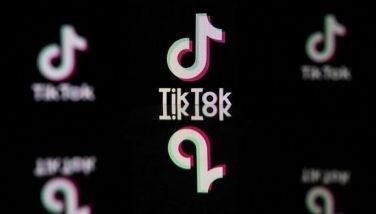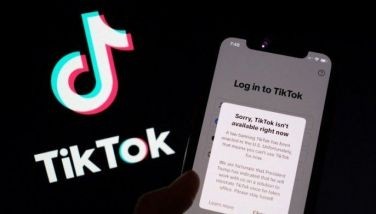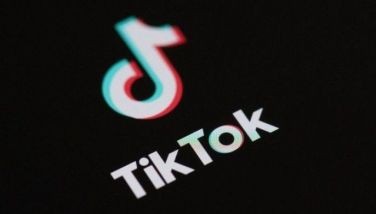New PDAs: More compelling features
November 16, 2001 | 12:00am
 Handheld computers have come a long way from being digital organizers to miniature personal computers that may soon prove to be viable substitutes for laptops as mobile computing devices. New handheld computers can manage addresses and schedules, run small productivity software such as spreadsheets and word processors, send and receive e-mail as well as surf the Web in a limited fashion through page clipping applications.
Handheld computers have come a long way from being digital organizers to miniature personal computers that may soon prove to be viable substitutes for laptops as mobile computing devices. New handheld computers can manage addresses and schedules, run small productivity software such as spreadsheets and word processors, send and receive e-mail as well as surf the Web in a limited fashion through page clipping applications.
Many are attracted to handheld computers because they are truly portable devices – their small form factor, doubled with their ability to be used in a number of different industries for a vast number of applications.
These devices are also favored for their relatively long battery life, quick integration to PCs and laptops and easy communications via infrared that allows users to send small files back and forth.
The disadvantages of handheld PCs are also attributed to their diminutive size as well as unwieldy handwriting recognition and data input limited to a stylus or an external keyboard.
The newest models available have even more compelling features such as expansion options for memory and third-party devices like digital cameras, GPS devices and MP3 players as well. Some manufacturers like Compaq and Handspring have enabled their devices to act as telephones, making the dream of a truly wireless Internet device a more attainable one. Let’s review the latest batch of handheld devices.
The latest addition to Handspring’s line is the hybrid PDA-cell phone called the Treo. Looking like a Tricorder device from Star Trek or even a shrunken Nextel phone, the Treo is a tiny PDA with full GSM telephone functionality.
The Treo functions as a dual-band world phone with speed dialing, three-way calling, vibrating call alert and GPRS functionality. As a PDA, it comes with 16 megabytes of memory.
There have been many past attempts at integrating a phone into a handheld PDA. In the past, such companies as Qualcomm and Motorola have come out with hybrids like the PDQ and Accompli models, respectively, which have enjoyed limited success. The Handspring Treo looks like it integrates the phone and PDA functions more seamlessly. The only object, it seems, is the price as the Treo is expected to sell between $400 and $600 when it is released early next year. Considering that this is a PDA that can surf the Web wirelessly and manage e-mail without the need to subscribe to a online service, then perhaps it’s the next best thing.
Similar to the Sony models, Handera’s 330 handheld incorporates a jog-dial which makes navigating the screen a lot easier than when using the stylus. The handwriting area of this handheld is also collapsible, which means a larger overall screen size than most other handhelds save Compaq’s iPaq and other PocketPC handhelds.
Handera can also take both rechargeable and regular batteries, further giving users the option of choosing which power source they prefer.
Handera is a specialized tool for power users who need a machine that is more than a glorified organizer. Business users will appreciate the expanded features and the fact that it can be used to record meetings and conversations for those times that a stylus would not be a fast enough means of inputting information. The best thing about this handheld is its price and there is no limit to its expansion possibilities. It can also easily use Palm peripherals without much compatibility problems.
The Clie is probably the most expensive and ambitious handheld computer running the Palm platform and costing $500 (no phone) for the high-end unit. The Clie integrates an MP3 player and even software to play short videos. The color screen of the Clie PEG-N760C is deemed as the clearest high-resolution screen on any Palm handheld – attribute this to Sony’s expertise in creating audio and video products. It seems that the Clie is Sony’s first step toward a pocket multimedia device that’s also a handheld computer.
These next-generation handheld computers are taking portable technology to a higher level of usability. Integrated telephony, powerful expansion via a range of different media and possibly audio and video integration make them portable productivity and entertainment devices.
These new handhelds offer users a range of applications that in the past were only possible in desktop systems, and to expand their productivity. The one killer application that would complete them would be the ability to run and project business presentations straight from the pocket. Once this is in place, the lower costs and multi-functional nature of these devices would make them suitable substitutes to portable notebook PCs.
BrandSpace Articles
<
>
- Latest
Latest
Latest
January 29, 2025 - 9:47am
By Glenn Chapman | January 29, 2025 - 9:47am
January 27, 2025 - 7:01pm
By Oliver Hotham | January 27, 2025 - 7:01pm
January 19, 2025 - 12:39pm
By Alex Pigman | January 19, 2025 - 12:39pm
January 19, 2025 - 10:05am
By Alex Pigman | January 19, 2025 - 10:05am
January 6, 2025 - 11:05pm
January 6, 2025 - 11:05pm
Recommended

























